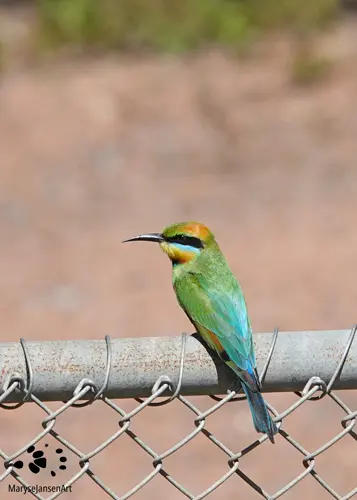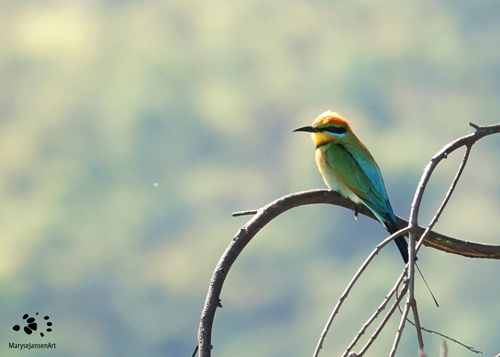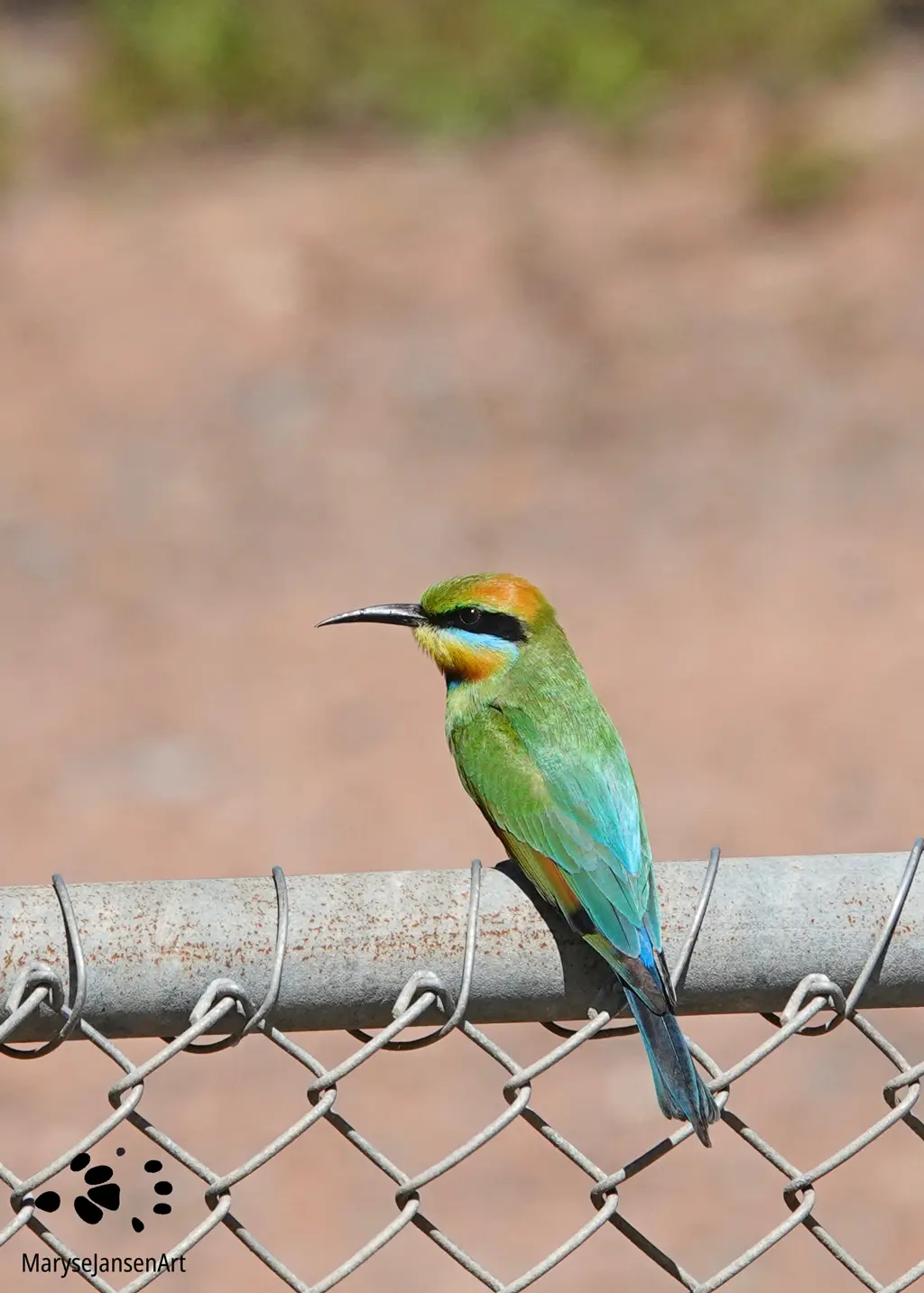Bird Photography with marysejansenart
Pretty Insect Exterminator with Surprising Nesting Habits

Table of Contents
A Flash of Colour
A flash of colour sheers through the sky, and darts back again to where it came from. I try to follow it with my eyes. There it is again! This time I find the branch that it has landed on and I can take a better look. An amazing looking multi-coloured bird named Rainbow Bee-eater is the cause of this spectacular aerial display. Over a period of a couple of months I see this species a few more times and then it disappears from the area again.
When I travel to north Queensland I see them again. They appear to be more common around here. These birds don’t like being in close proximity to people and they keep their distance. They are fairly small birds too so a good zoom capacity is needed to get some decent photos to be able to admire all those beautiful colours in detail.
Multi-coloured Plumage
In the featured image you can take a good look at its colours. When the wings are folded, the bird appears mostly cloaked in hues of blue and green. It has an orange crown and the underparts of the throat are also orange. The upper parts of the throat are yellow.
There are two distinct black bands. One extends from the long black, curved bill to the ears, only broken up by a bright red eye. Just below this black band is a thin, iridescent blue line, contrasting with the black band in stunning way. (Check out my post about the Variegated Fairy-wren to see another beautiful display of iridescent blue!) The other black band sits just below the throat, almost like a necklace. The chest can vary between green and yellow tinges.
When the bird is in flight, we get to see the copper-coloured flight feathers, which have a black tip. The tail is black, with a blue shine and it has long, thin streamers. It is interesting to note that the streamers are shorter and thicker in females and not present at all in younger birds. Juveniles are generally a bit duller in colour and lack the black necklace – it is more blue in their case. Their eye is dark in colour and will turn red as they mature.
When we look at the featured image we can conclude by the dark eye and the absence of tail streamers that this is a fairly young bird. However, it is beginning to show the black necklace and its colouring is far from dull, so I guess it is very close to maturity!
A Menu of Bees and other Insects
The favourite food of these birds are, as you would expect from their name, indeed bees and also wasps. They catch the insects on the wing. The Rainbow Bee-eaters can spot their prey from almost 50 metres away! They swoop down from their vantage point and catch their prey while performing some stunning aerial acrobatic work. Then, they take it back to their perch and beat it up against the branch to subdue it. They remove the stingers of the bees and wasps by rubbing the insects against the branch they perch on. The birds close their eyes while they do that to avoid getting venom squirted in their eyes!
Can you imagine these birds can eat hundreds of bees each day?? And if there are not enough bees to their liking, they will take other insects as well. Examples are dragonflies, beetles, hornets, locusts, butterflies and moths. As I am walking through the wetlands of ‘Town Common Conservation Park’ again, I admire the hunting skills of these birds several times.
Check out this week’s episode of ‘Come for a walk in the Australian Bush’ to see the Rainbow Bee-eater at work, revealing the copper-coloured flight feathers and showing off its aerial acrobatics several times! Episode #25 already in the series!! This is my longest video so far. Apart from the Bee-eater, there is so much more to see on this walk, I think it is absolutely worth watching! It’s incredible how much you can see on 1 single walk! And make sure you read on below for more interesting information about these beautiful birds!
Now that we know about the feeding behaviour, it is no wonder that the Bee-eaters from more southern areas move north during winter. In warmer regions there are a lot more insects present! Populations that reside in northern areas of Australia can stay put, as they have plenty of food year round! As I had noticed, here in south-east Queensland their presence is indeed a seasonal occurrence.
Building a Nest in an Unusual Place
If I am lucky I might get to see them breeding when they come back during summer, as that is their breeding season. You may not expect this, but Rainbow Bee-eaters do not nest in trees. Rather, they dig tunnels and chambers in sandy banks!
A Rainbow Bee-eater male and female pair for life, and together they decide on what would be a good nesting spot. Then, the female sets to work and starts digging the tunnel, while the male goes back and forth bringing her food. It takes her about 12 days to create a narrow tunnel of about 90cm in length! At the end she digs out a nesting chamber. Interestingly, the tunnels can be shared with other birds.
In the chamber the female lays a clutch of 3-7 eggs. Both parents are involved in the incubating process which takes about 24 days. During the next month the chicks will be fed by both parents and sometimes other birds in the group may help as well. Being born underground is not without danger. Even though the tunnels are long and narrow, some predators, such as Cane Toads can squeeze in. Dogs and foxes can dig them up and so can people, especially as the birds may sometimes nest in active mines or quarries. But if all goes to plan, the birds will fledge after 28-30 days and please our eyes with their beautiful colours!

If you are interested in purchasing the featured image ‘Rainbow Bee-eater Portrait’ or would like to see what the image looks like on the various products, please head to my shop. If you prefer the other image, ‘Rainbow Bee-eater’, click shop here.


